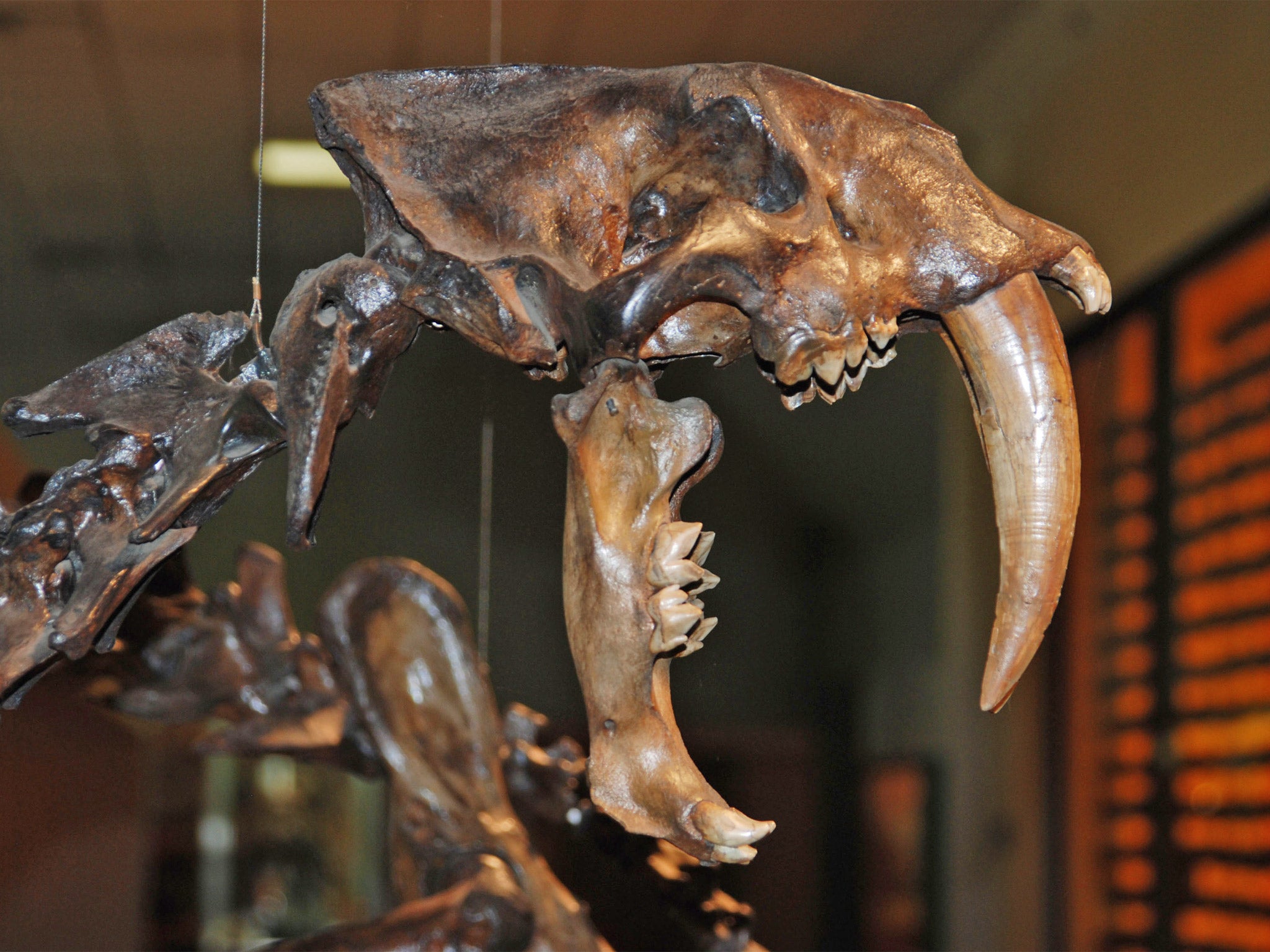Ice Age cats ate well… until they died out

Sabre-toothed cats and other Ice Age predators were well fed and flourishing just before they died out, according to new research.
The evidence, from a study of the animals' teeth, deepens the mystery surrounding the "megafaunal extinction" that wiped out legions of large beasts in North America.
Previously it was assumed that changing climate at the end of the Pleistocene era, combined with human activity, killed off the animals.
As prey species such as mammoths and bison vanished, it would have been increasingly difficult for large carnivores to find enough food, according to the theory.
But the new findings suggest that two leading predators, the sabre-toothed cat and American lion, were not going hungry at all in the years leading up to their demise.
If anything, the reverse was true. They appeared to have more meat than they needed.
Scientists used a highly accurate computerised technique to study 3D magnified images of tooth surfaces.
Fossil teeth of 15 American lions and 15 sabre-toothed cats that had been preserved in natural tar pits were examined.
The specimens dated from around 35,000 to 11,500 years ago - just before the megafaunal extinction.
Experts know that when food is scarce, carnivores try to avoid wasting it. They consume more of their kills and tend to crunch more bones - which leaves tell-tale marks on their teeth.
Chomping red meat produces small parallel scratches on the tooth surface, while bones add larger, deeper pits.
The research found no sign of greater consumption of carcasses as the big cats neared extinction. Instead, the analysis indicated that, for both species, the proportion of their kills the animals devoured actually declined.
Study leader Dr Larisa DeSantis, from Vanderbilt University in Nashville, US, said: "The net result of our study is to raise questions about the reigning hypothesis that 'tough times' during the late Pleistocene contributed to the gradual extinction of large carnivores.
"While we cannot determine the exact cause of their demise, it is unlikely that the extinction of these cats was a result of gradually declining prey (due either to changing climates or human competition) because their teeth tell us that these cats were not desperately consuming entire carcasses, as we had expected, and instead seemed to be living the good life during the late Pleistocene, at least up until the very end."
The findings are published today in the online journal Public Library of Science ONE.
They contradict an earlier study of predator teeth recovered from the same tar pits at La Brea in California.
In 1993, a team led by Dr Blaire Van Valkenburgh, from the University of California in Los Angeles, found large numbers of broken teeth among the specimens. This was assumed to be evidence that the hungry carnivores were utilising carcasses more fully and damaging their teeth on their bones.
Dr DeSantis believes the teeth could just as easily have been broken in the course of taking down prey.
The American lions and sabre-toothed cats had far more broken canines than back teeth.
Species such as hyenas, which habitually crack bones, are as likely to break their chewing teeth as their canines, Dr DeSantis pointed out. On the other hand active hunters such as cheetahs, which avoid bones during feedings, were twice as likely to damage their canines in the course of making a kill.
The study showed that the wear pattern on the teeth of the American lion closely resembled that of the cheetah.
The sabre-toothed cat's wear pattern was more like that of the present-day African lion, which indulges in some bone crunching when it eats.
In addition, the large size of the extinct carnivores' prey might have contributed to broken teeth, say the scientists.
Sabre-toothed cats were about the size of modern African lions, while the extinct American lion was 25% larger.
The animals they hunted included mammoths, four-ton ground sloths and 3,500lb bison.
PA
Join our commenting forum
Join thought-provoking conversations, follow other Independent readers and see their replies
Comments